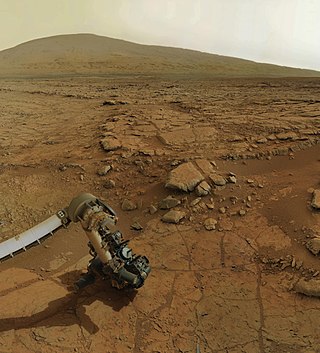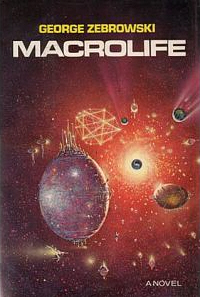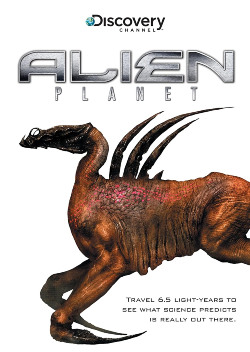
Astrobiology is a scientific field within the life and environmental sciences that studies the origins, early evolution, distribution, and future of life in the universe by investigating its deterministic conditions and contingent events. As a discipline, astrobiology is founded on the premise that life may exist beyond Earth.

The Drake equation is a probabilistic argument used to estimate the number of active, communicative extraterrestrial civilizations in the Milky Way Galaxy.

Extraterrestrial life or alien life is life which may occur outside of Earth and which did not originate on Earth. No extraterrestrial life has yet been conclusively detected, although efforts are underway. Such life might range from simple forms such as prokaryotes to intelligent beings, possibly bringing forth civilisations that might be far more advanced than humanity. The Drake equation speculates about the existence of sapient life elsewhere in the universe. The science of extraterrestrial life is known as astrobiology.
The Fermi paradox is the discrepancy between the lack of conclusive evidence of advanced extraterrestrial life and the apparently high likelihood of its existence. As a 2015 article put it, "If life is so easy, someone from somewhere must have come calling by now."

The Science Museum is a major museum on Exhibition Road in South Kensington, London. It was founded in 1857 and is one of the city's major tourist attractions, attracting 3.3 million visitors annually in 2019.

Macrolife: A Mobile Utopia is a 1979 science fiction novel by American author George Zebrowski.
Extraterrestrial intelligence refers to hypothetical intelligent extraterrestrial life. No such life has been detected in the Solar System except for humans and animals on Earth, and its existence on other star systems is still speculative. The question of whether other inhabited worlds might exist has been debated since ancient times. The modern form of the concept emerged when the Copernican Revolution demonstrated that the Earth was a planet revolving around the Sun, and other planets were, conversely, other worlds. The question of whether other inhabited planets or moons exist was a natural consequence of this new understanding. It has become one of the most speculative questions in science and is a central theme of science fiction and popular culture.
Xenoarchaeology, a branch of xenology dealing with extraterrestrial cultures, is a hypothetical form of archaeology that exists mainly in works of science fiction. The field is concerned with the study of the material remains to reconstruct and interpret past life-ways of alien civilizations. Xenoarchaeology is not currently practiced by mainstream archaeologists due to the current lack of any material for the discipline to study.

The communication with extraterrestrial intelligence (CETI) is a branch of the search for extraterrestrial intelligence (SETI) that focuses on composing and deciphering interstellar messages that theoretically could be understood by another technological civilization. The best-known CETI experiment of its kind was the 1974 Arecibo message composed by Frank Drake.

Alien Planet is a 2005 docufiction TV special created for the Discovery Channel. Based on the 1990 book Expedition by the artist and writer Wayne Barlowe, Alien Planet explores the imagined extraterrestrial life of the fictional planet Darwin IV in the style of a nature documentary. Although closely following Barlowe's depiction of Darwin IV, Alien Planet features a team of scientists and science fiction figures discussing Darwin IV as if it had actually been discovered. Among the people featured are Michio Kaku, Stephen Hawking, Jack Horner, James B. Garvin and George Lucas.

First contact is a common science fiction theme about the first meeting between humans and extraterrestrial life, or of any sentient species' first encounter with another one, given they are from different planets or natural satellites. The theme allows writers to explore such topics such as xenophobia, transcendentalism, and basic linguistics by adapting the anthropological topic of first contact to extraterrestrial cultures.
Extraterrestrial is a British-American two-part television documentary miniseries, aired in 2005 in the UK by Channel 4, by the National Geographic Channel in the US on Monday, May 30, 2005 and produced by Big Wave Productions Ltd. The program focuses on the hypothetical and scientifically feasible evolution of alien life on extrasolar planets, providing model examples of two different fictional worlds, one in each of the series's two episodes.
X is a science fiction space trading and combat simulator series created by German developer Egosoft. The series is set in the X-Universe where several races populate a number of worlds connected by jumpgates. The games feature free roaming gameplay with trading, combat, empire building, and missions; leading to the series' phrase: "Trade, Fight, Build, Think". The series, which was launched in 1999 on the Windows platform, consists of five base games: X: Beyond the Frontier, X2: The Threat, X3: Reunion, X Rebirth, and X4: Foundations. X Rebirth introduced a new rendering engine as well as a new plot, one which X4: Foundations now extends the storyline beyond ten years after the events in X Rebirth.
Cosmic Odyssey is a 2002 Canadian documentary television series about the cosmos, created by Avanti Pictures, narrated by William Shatner, and produced by Soapbox Entertainment for The Discovery Channel. In 2003, Schlessinger Media released the series in VHS video format. As of 2007, the series is syndicated on The Science Channel.
The Science of Spying was a touring exhibition produced by The Science of..., a joint venture between the Science Museum (London) and Fleming Media. The Science of Spying opened at the Science Museum on 10 February 2007 and a duplicate exhibition opened in the Children's Museum of Indianapolis on 16 March 2007. The exhibition was scheduled to tour venues around the world for 5 years.

Technosignature or technomarker is any measurable property or effect that provides scientific evidence of past or present technology. Technosignatures are analogous to biosignatures, which signal the presence of life, whether intelligent or not. Some authors prefer to exclude radio transmissions from the definition, but such restrictive usage is not widespread. Jill Tarter has proposed that the search for extraterrestrial intelligence (SETI) be renamed "the search for technosignatures". Various types of technosignatures, such as radiation leakage from megascale astroengineering installations such as Dyson spheres, the light from an extraterrestrial ecumenopolis, or Shkadov thrusters with the power to alter the orbits of stars around the Galactic Center, may be detectable with hypertelescopes. Some examples of technosignatures are described in Paul Davies's 2010 book The Eerie Silence, although the terms "technosignature" and "technomarker" do not appear in the book.
The Carl Sagan Institute: Pale Blue Dot and Beyond was founded in 2014 at Cornell University in Ithaca, New York to further the search for habitable planets and moons in and outside the Solar System. It is focused on the characterization of exoplanets and the instruments to search for signs of life in the universe. The founder and current director of the institute is astronomer Lisa Kaltenegger.
Breakthrough Initiatives is a science-based program founded in 2015 and funded by Julia and Yuri Milner, also of Breakthrough Prize, to search for extraterrestrial intelligence over a span of at least 10 years. The program is divided into multiple projects. Breakthrough Listen will comprise an effort to search over 1,000,000 stars for artificial radio or laser signals. A parallel project called Breakthrough Message is an effort to create a message "representative of humanity and planet Earth". The project Breakthrough Starshot, co-founded with Mark Zuckerberg, aims to send a swarm of probes to the nearest star at about 20% the speed of light. The project Breakthrough Watch aims to identify and characterize Earth-sized, rocky planets around Alpha Centauri and other stars within 20 light years of Earth. Breakthrough plans to send a mission to Saturn's moon Enceladus, in search for life in its warm ocean, and in 2018 signed a partnership agreement with NASA for the project.








